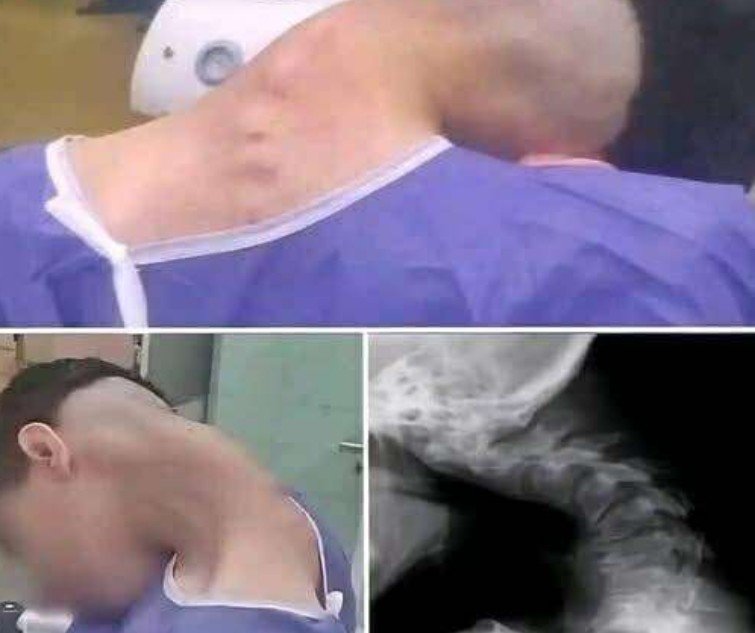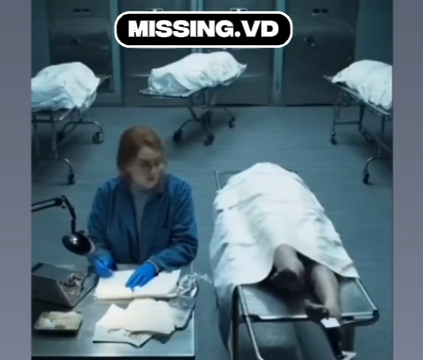Imagine waking up one morning and realizing your neck no longer has the strength to hold up your head. For a 23-year-old man from Isfahan, Iran, that terrifying thought became a reality. What began as mild neck discomfort gradually escalated until he could no longer keep his head upright without support. After several medical tests, doctors diagnosed him with a rare condition called Dropped Head Syndrome (DHS)—a disorder most often seen in elderly patients. This unusual case shocked the medical community and raised an unsettling question: could our modern lifestyles, dominated by hours of screen time and poor posture, be putting younger generations at risk for conditions once limited to old age?

Dropped Head Syndrome is a rare but serious condition where the muscles that hold the head upright—particularly in the back of the neck—gradually weaken. Over time, this weakness causes the head to droop forward, making it difficult or even impossible to maintain an upright posture. While the condition is often associated with neuromuscular diseases like myasthenia gravis, amyotrophic lateral sclerosis (ALS), or Parkinson’s disease, doctors are now beginning to see younger patients exhibiting similar symptoms without any underlying neurological disorder. In many cases, lifestyle habits appear to be the common thread.
For the young man in Isfahan, his lifestyle reflected what many in today’s digital generation experience—long hours hunched over a computer screen, endless scrolling on his phone, and minimal physical activity. Over time, these behaviors can lead to weakened neck and shoulder muscles, poor alignment, and even nerve compression. In this case, what might have started as simple posture strain developed into a debilitating condition that made basic tasks like eating, reading, or walking nearly impossible without assistance.
Understanding the Causes
While Dropped Head Syndrome is sometimes linked to severe neuromuscular disorders, medical experts warn that posture-related muscle fatigue can also play a major role. Spending hours each day with your head tilted forward—such as when looking down at a phone or laptop—can place tremendous strain on the neck muscles. Over time, this unnatural angle shortens the front neck muscles and overstretches the back ones, leading to progressive weakness. Sedentary lifestyles and a lack of core and upper body strength further contribute to this imbalance. Doctors now believe that in rare but extreme cases, these chronic habits can cause structural changes significant enough to mimic neuromuscular disease.
Symptoms to Watch For
Early signs of DHS can be subtle, making it easy to dismiss them as routine stiffness or fatigue. Persistent neck soreness, a sensation of heaviness in the head, and difficulty maintaining an upright posture are among the first warning signals. Patients may also notice that their head naturally tilts forward, or that they need to use their hands to lift it. In advanced cases, there may be limited mobility in the neck, shoulder pain, and tingling or numbness in the arms caused by compressed nerves. Because these symptoms overlap with other conditions, prompt evaluation by a healthcare professional is essential for accurate diagnosis.
How Doctors Diagnose DHS
Medical professionals typically begin with a detailed physical and neurological examination. They assess muscle strength, reflexes, and range of motion. Imaging tests such as MRI scans help rule out spinal cord compression or disc herniation, while electromyography (EMG) evaluates the electrical activity in muscles to determine whether the problem stems from nerve damage or muscle weakness. Blood tests can also help identify autoimmune or inflammatory diseases. In the case of the young patient in Isfahan, doctors performed several of these tests before confirming that his condition was not caused by a degenerative disease but rather by prolonged mechanical strain and muscle fatigue.
Treatment Options and Rehabilitation
The good news is that when Dropped Head Syndrome is caused by muscle weakness rather than a progressive neurological disorder, it can often be managed or reversed through targeted treatment. The cornerstone of recovery is physical therapy, focusing on strengthening the neck, upper back, and shoulder muscles. Therapists use gradual resistance exercises to help patients regain stability and posture control. Posture correction training is also critical, teaching individuals to maintain a neutral spine position whether sitting, standing, or using electronic devices.
In some cases, doctors may recommend neck braces or supports to temporarily relieve muscle strain, especially during daily activities. However, prolonged use can lead to dependency, so braces are typically paired with active rehabilitation. Other treatments include ergonomic adjustments, such as raising computer screens to eye level, using chairs with proper lumbar support, and taking frequent breaks from sitting. If inflammation or nerve irritation is present, medications may be prescribed to reduce pain and swelling.
Lifestyle Adjustments for Prevention
Preventing Dropped Head Syndrome starts with awareness. Modern habits, particularly excessive screen use, are putting enormous strain on the neck and spine. To protect yourself, experts recommend simple but effective lifestyle changes. Keep screens—whether phones, tablets, or monitors—at eye level to avoid constantly bending your neck forward. Take a five-minute stretching break every hour to loosen tight muscles. Incorporate exercises that strengthen the neck, shoulders, and core, such as gentle yoga or pilates. At night, use a supportive pillow that aligns the neck with the spine. Most importantly, don’t ignore chronic neck pain—early medical evaluation can prevent minor issues from escalating into severe conditions.
A Wake-Up Call for a Screen-Obsessed Generation
The case from Isfahan serves as a warning for today’s tech-reliant society. The convenience of digital life comes with physical costs, many of which remain hidden until it’s too late. Our bodies are not built for endless hours of slouching or looking down. What begins as mild tension can evolve into chronic pain, nerve damage, and even structural deformities if left unchecked. Dropped Head Syndrome is rare, but its presence in a healthy young adult underscores how much modern behavior can shape physical health in unexpected—and alarming—ways.
Why Early Intervention Matters
Doctors emphasize that the earlier DHS is identified, the better the chances of recovery. Strengthening exercises and posture correction can yield significant improvement, especially if started before severe muscle atrophy occurs. The young man from Isfahan, after months of dedicated physical therapy and lifestyle changes, gradually regained the ability to hold his head upright. His story offers hope—but also a lesson in accountability. Prevention, in this case, truly is the best medicine.
Final Thoughts
Dropped Head Syndrome might seem like an extreme example, but it symbolizes a broader problem: the physical toll of modern living. Each hour spent hunched over a phone or laptop adds invisible strain that accumulates over time. Awareness, movement, and good posture can make the difference between lifelong pain and lasting health. So, the next time you catch yourself leaning too close to your screen, take a moment to straighten your back, stretch your neck, and remember—your posture today shapes your well-being tomorrow.
Disclaimer: This article is for informational purposes only and should not be taken as medical advice. Always consult a qualified healthcare provider for diagnosis or treatment of any medical condition.





